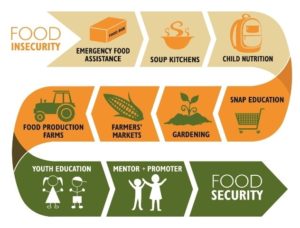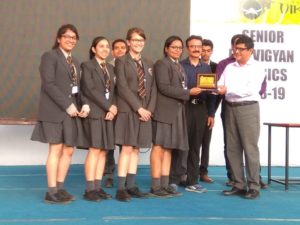"You can't build a peaceful world on empty stomachs and human misery. Food scarcity, malnutrition and hunger have been a living nightmare for every single country for as long as civilizations evolved."
Problem Statement
Let's take an insight into the past, to analyze this statement in a better way!
India’s history is one of the alternating periods of feast and famine. A resource-rich country referred to as “the land of plenty”, counts for numerous famines throughout its history. These include famines during the period under British rule (1757-1947) and the 1943 Bengal famine having been one of the worst. A painful time for all people, young and old, watching helplessly, as the whole region faced the turmoil.
Moreover, if we ponder over this, our condition in 2018 is not that far from 1943. With 195 m ha under cultivation, India is the third largest producer of orange and coconut production, the second largest producer of sugarcane. It also produces groundnut annually about six million tonnes and even one of the largest producers of cereals, pulses, spices etc. No doubt, these facts bring to our notice the high agricultural productivity of India. But if we analyze them from the other aspect, we will find that all these products after use generate an equal amount of waste in the form of peels and other organic wastes. So, the higher India is ranked in agricultural production, equally high it is placed in waste production.
How to utilize these wastes?
A clear solution for this is to make Superabsorbent Polymers (SAPs) and Biochars by using different fruit waste which acts as an organic garbage.
SAPs absorb and carry about 300 times its weight in liquid relative to their own mass. When an SAP is cross-linked with polymerization, the product is a water retaining hydrogel that acts as a reservoir of collected water in the soil.
In recent studies, the use of Superabsorbent Polymers (SAPs) in agriculture has seen to significantly reduce water depletion in soil while dramatically increase the plant survival and growth rate. However, commercially found SAPs are non-biodegradable as they contain many chemicals such as acrylic acid and hydrochloric acid and are also costly. Therefore it is difficult to apply to poorer communities.

Conclusion
- Results of the experiments indicate SAP and Biochars can be used as an excellent biodegradable green ameliorant in drought-prone areas or where there is a scarcity of rains to increase the productivity as frequent irrigation can be avoided.
- Results of water holding capacity, soil moisture content, and effect on the growth of the plants indicates that orange peel mixture absorbed the maximum amount of water and produced the healthiest and the tallest plant even after 20 days without water.
- The orange SAP and biochars cost minimal expenditure as they are made from the wastes. Only expenses are in electricity and time.
- Orange sap acts as a gelling agent which possessed the ability to absorb 50% water and retained the moisture for 20 days keeping the plant healthy.
- Sugarcane and coconut biochars also provided a fruitful result of water retaining capacity as they are carbon-rich compounds.
- Thus biochars and SAP can be considered as eco-friendly, feasible, economical means of a sustainable and biodegradable green ameliorant.

